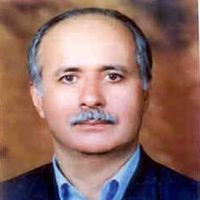Exploratory analysis of visitors spatial-temporal behavior patterns Case Study: The Cultural and Historical Complex of Saadabad
Article Type:
Research/Original Article (دارای رتبه معتبر)
Abstract:
Introduction
So far, tourism has been viewed from different perspectives and in different fields. Recently, the behaviorists have led tourism development researchers minds to identifying individual characteristics, more than ever. Because, the tourism facilities and equipment provision if not based on the understanding the environment, will not be getting much satisfaction. Accordingly, the development of tourism based on the tourists behavior is an effective and desirable solution. Tourism applications are strongly affected by behavioral -activation patterns of communities. Tourist behaviour always takes place in time and space, and the study of spatial temporal behaviour has become increasingly popular in recent years. Tourist behaviour has been studied by researchers from various perspectives. Describing and portraying tourist spatial-temporal behaviour patterns results in a better understanding of tourist activities. A better understanding of tourist behaviour patterns may, in turn, provide a scientific basis for industry practices, such as attraction management, product renewal and attraction marketing. This study has practical significance for the upgrading of attraction facilities and the ultimate improvement of the quality of tourist experiences. Time is considered to be one of the three main constraints on tourism demand (the other two being money and political control). Recently, tourism scholars have paid increasing attention to the effects of time factors on tourist behaviour. Time, space and context were considered to be three important domains of tourist experience. The concept of time geography was proposed and developed by the geographer Hagerstrand. Hagerstrands time geography offers a useful conceptual framework with which to study individual activity patterns under various constraints in a spacetime context . The spacetime path is the core concept of time-geography. It highlights the constraints imposed by activities that are finite in space and time, and the need to trade time for space when moving among activities. The space time path represents the spatial movements of an individual over time, and offers an effective way of modelling the spatial-temporal characteristics of individual activities . By applying the concept of the spacetime path, it is possible to capture and analyze tourist behavior information in both the temporal and spatial dimensions, which helps us to improve our understanding about tourism behavior both theoretically and practically.Research
Methodology
The aim of the present study is functional and the method is heuristic, described. This study focuses on the concepts of time geography and collecting data from Visitors of The Cultural and Historical Complex of Saadabad by diaries studying timespace activities method. In order to analysis, direct and indirect relationships based on graph theory are used for the data structuring and To depict identified behavior patterns, Alpha levels of 0, 0.25, 0.5, 0.75 and 1 were assessed.This study focuses on tourists temporal-spatial behaviors, and tries to recognize tourists spatial-temporal behavior structure patterns that can use to update attractions facilities and improve the final quality of the tourist experience in The Cultural and Historical Complex of Saadabad and similar attractions across the country. This research seeks to answer this question, how is the spatial- temporal behavior pattern of The Cultural and Historical Complex of Saadabad visitors and what factors influenced on it?
Discussion and
Results
The research results obtained from The Cultural and Historical Complex of Saadabad case study revealed nine clusters of temporal-spatial behavior patterns that the spatial behavior factors had the largest contribution in the clustering analysis. The most popular tourist spots of the Saadabad collection was palace of Mellat located in district C and the Green palace located in district E, that the most visitors stood for 30 minutes there, and the main activity in the collection was visiting the Palace Museums. To depict identified behavior patterns, Alpha levels of 0, 0.25, 0.5, 0.75 and 1 were assessed and results of Alpha=0.25 were detected for set appropriate behavior patterns.Conclusion
This study focuses on intra-attraction tourist temporal-spatial behaviour patterns, and attempts to clarify intra-attraction tourist spatial-temporal behaviour patterns using the concept of the spacetime path of time geography. A case study of The Cultural and Historical Complex of Saadabad has done. Tourist spatial-temporal behaviour can be described and clarified by temporal behaviour factors, spatial behaviour factors, activity choice factors and path characteristics factors. After a qualitative reasoning process, the results of the clustering analysis can be presented as visual images. Describing and portraying intra-attraction tourist temporal-spatial behaviour patterns can help us to better understand tourist activities and demand among attractions. The research results of the Cultural and Historical Complex of Saadabad case study revealed nine clusters of temporal-spatial behaviour patterns, rather than a homogeneous social group. spatial Behavior factors made the largest contribution to the clustering analysis in this case. The results of the quantitative study suggest that a stay of at least 10 minutes and at most 45 minutes is the threshold for stay time for the identification of a stay point. The results of this study help people get a better understanding of intra-destination tourist behaviour patterns in The Cultural and Historical Complex of Saadabad in a more accurate and structural way. A better understanding of tourist behaviour patterns should provide a more scientific basis for industry practices, such as location of service, guide identification system and intra-attraction transportations. This study thus has practical significance for the upgrading of attraction facilities and ultimately the improvement of the quality of tourist experiences. The research results obtained from the Cultural and Historical Complex of Saadabad case study revealed nine clusters of temporal-spatial behavior patterns that the spatial behavior factors had the largest contribution in the clustering analysis. In a similar study in China, Huang Xiao-Ting and Wu Bi-Hu , were identified seven clusters of temporal-spatial behavior patterns in the Summer Palace. In the mentioned study, temporal behaviour factors had the largest contribution in the clustering analysis. Keywords:
Language:
Persian
Published:
Human Geography Research Quarterly, Volume:50 Issue: 103, 2018
Pages:
17 to 34
magiran.com/p1825415
دانلود و مطالعه متن این مقاله با یکی از روشهای زیر امکان پذیر است:
اشتراک شخصی
با عضویت و پرداخت آنلاین حق اشتراک یکساله به مبلغ 1,390,000ريال میتوانید 70 عنوان مطلب دانلود کنید!
اشتراک سازمانی
به کتابخانه دانشگاه یا محل کار خود پیشنهاد کنید تا اشتراک سازمانی این پایگاه را برای دسترسی نامحدود همه کاربران به متن مطالب تهیه نمایند!
توجه!
- حق عضویت دریافتی صرف حمایت از نشریات عضو و نگهداری، تکمیل و توسعه مگیران میشود.
- پرداخت حق اشتراک و دانلود مقالات اجازه بازنشر آن در سایر رسانههای چاپی و دیجیتال را به کاربر نمیدهد.
In order to view content subscription is required
Personal subscription
Subscribe magiran.com for 70 € euros via PayPal and download 70 articles during a year.
Organization subscription
Please contact us to subscribe your university or library for unlimited access!




